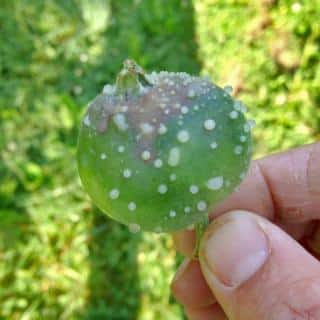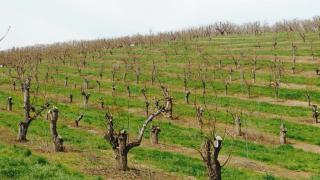

Fireblight is a fast-spreading bacterial disease. It’s crucial to cut off and remove any infection before it spreads too far.
Fire blight key facts
Botanical name – Erwinia amylovora
Common name – Fire blight bacterial disease
Symptoms – Wilting flowers, cankers, sticky goo
A terrifying disease in orchards where it attacks apple trees, pear trees and other species of the same family, fire blight can quickly decimate an entire plot if you don’t deal with it fast enough.
The Erwinia amylovora bacteria is what causes fire blight. This particular disease will only infect plants that are part of the Rosaceae family: apple tree, pear tree, cotoneaster, rowan or mountain ash (Sorbus), hawthorn (Crataegus), photinia (Photinia or Stranvaesia) and firethorn (Pyracantha).
Note that some Rosaceae plants seem invulnerable to fireblight, especially stone fruit trees such as plum, cherry, peach and nectarine trees.
The disease probably originated in North America nearly 200 years ago, then spread to Europe in the mid-1900s. Ever since, local agriculture offices constantly monitor its spread. In some countries, fire blight is the reason there’s a ban on import, planting and trade of specific plant species. Indeed, such species facilitate fire blight contamination and spread.
First of all, to control fire blight, it’s important to recognize symptoms of the disease:
The key characteristic of bacterial fire blight is that it spreads extremely fast. A branch is a goner within days, and an entire tree might only survive a couple months.

The disease is active from Spring to Fall, and flares up during vegetation phases. Fireblight spreads particularly fast after the blooming since the bacteria enters plants through tiny wounds left on flower stems as the wilting petals break off. Of course, when pruning and trimming, each cut is like an open door through which the invader can come charging in.
To this day, there isn’t any curative treatment against fire blight, either natural or chemical. The only way forward is prevention. Through certain practices, you can protect plants and safeguard your orchard from contamination.
 As soon as you detect the disease, eliminate diseased portions by cutting them off:
As soon as you detect the disease, eliminate diseased portions by cutting them off:
Important: the only effective way to destroy plant material infected with fire blight is to burn it. Also, take great care to disinfect all your tools, gloves, and clothes, even if you feel you haven’t used them. This is actually a good habit to take even when you’re not trying to fight off an infection.